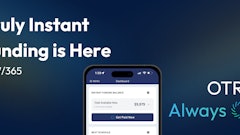
The report "Payment's New Land of Opportunity" features case studies of J.P. Morgan clients that have implemented single-use accounts and extended the use of their purchasing card programs to hold on to cash longer, pay suppliers sooner, increase rebates and reduce A/P manpower costs.
"Corporate treasury departments are under great pressure to manage costs, control spending and increase working capital," said Eduardo Vergara, global commercial card executive with J.P. Morgan Treasury Services. "Card programs are becoming the payment tool of choice as organizations increasingly migrate higher-value, paper-based transactions to electronic payment with complete confidence."
Filling in the Gaps
Until recently, the prime focus for treasury departments has been at two ends of the payment spectrum. Credit cards have traditionally been used for travel and entertainment and some low-dollar expenses, while ACH has been reserved for the high-ticket, direct suppliers. Check processing, renowned for its high cost and no revenue benefit, has filled in all the gaps.
Now, companies see a new land of opportunity: the fertile "middle ground" of payment, encompassing a wide field of transactions that have, until this point, been handled by paper. This is the spend landscape that falls somewhere in between low- and high-ticket transactions, with suppliers that invoice regularly but may not be high-volume vendors.
To address this opportunity, companies are using two payment solutions, working in tandem, the purchasing card and single-use accounts, according to the J.P. Morgan report.
Single-use Accounts
Single-use accounts perform like a check but work like a card, with each transaction assigned a unique 16-digit account number that is assigned to a specific invoice or vendor. This account number is active for only a defined timeframe and is electronically matched to pre-purchase information. The number can be used at any point in the purchasing process: at time of order, invoice or receipt of goods.
The single-use accounts allow companies to "lock down" purchasing controls as they see fit. They can establish unique spending restrictions, including limits on transaction amounts, dates and merchants, thereby helping to reduce or entirely eliminate fraud and misuse. On the back end, automatic electronic remittance allows suppliers to get paid faster and companies hold on to cash longer, gaining greater power over their cash flow.
The J.P. Morgan report highlights how several companies have used single-use accounts to accomplish various goals, including gaining tighter control of subcontractors (based on the example of ServiceMaster), rapid automation of the payment process (U.S.-based distributor of healthcare products and services), and eliminating fraud (Expedia and Hotwire).
Additional highlights from the report include:
- Companies are looking beyond traditional spend categories and targeting non-traditional suppliers for purchasing card payments. Some companies are capturing higher rebates and paying vendors more quickly by using purchasing cards to pay for temporary employment services, utilities, employee drug screening, on-premise security services, legal service providers, advertising and modeling agencies.
- Companies using single-use accounts report results such as more efficient A/P processing, improved fraud protection, increased working capital and larger financial rebates.
- Single-use account rebates can be significant. Some companies are earning 1 percent on their larger, indirect purchases.
- Participating suppliers can be paid 15 to 20 days earlier through single-use accounts, improving the company's days payable outstanding.
The report also features examples of companies "unshackling" their purchasing cards, that is, removing tight constraints around purchasing card usage in order to drive greater benefits. The report concludes with several "best practices" for "capturing the middle ground" of payments.
"Payment's New Land of Opportunity" is available for free (registration required) here.



















